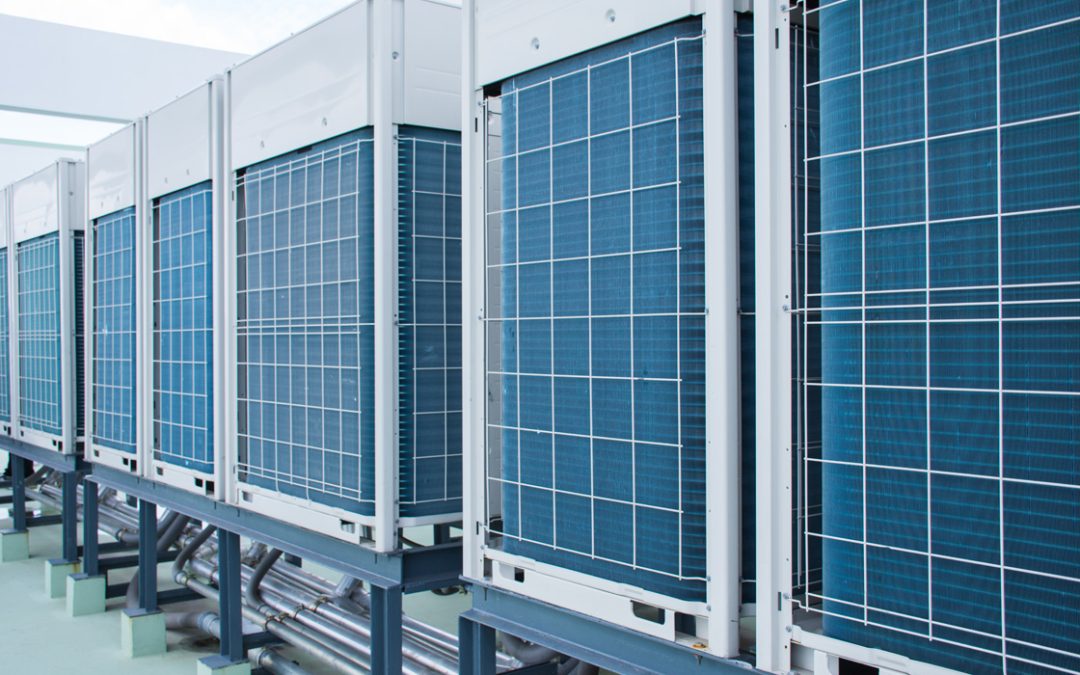Why Does Size of Chillers Matter?
A chiller system is primarily used to remove heat from a structure or process so that the inside space is comfortable. The chiller needs to be the right size for the particular needs of the building to accomplish this effectively. The sizing procedure entails a thorough examination of several variables, such as the building’s size, layout, occupancy, internal heat gains, and environmental conditions. Without this precise calculation, the system is likely to have performance concerns.
For example, brief cycling—a chiller that frequently switches on and off because it achieves the set temperature too quickly—can result from a huge chiller. This constant cycle not only consumes energy but also shortens the lifespan and increases maintenance expenses of the system’s component wear and tear. Furthermore, because a bigger chiller requires more extensive infrastructure, such as larger pumps, pipes, and electrical sets, the initial cost of buying and installing one is much higher.
On the other hand, a chiller that is too small finds it difficult to satisfy the cooling demand, especially when the load is at its highest. As a result, to maintain the appropriate temperature, the chiller must operate constantly, which again results in excessive energy consumption and accelerates system wear. Inadequate cooling capacity can also result in higher interior temperatures, which could be uncomfortable for residents and possibly harmful to processes or equipment that is sensitive to temperature.
Balancing Efficiency and Cost:
Finding the ideal balance between cost and efficiency is one of the main objectives of HVAC design. A properly sized chiller runs within its ideal range, guaranteeing that it cools the area sufficiently without using too much energy. This balance is important since it has a direct effect on the system’s long-term operating expenses.
For instance, a chiller that is appropriately designed would normally run at or close to its design load for the majority of its operation, which is when it is most efficient. Operating too much below this load, like with a large chiller, results in inefficiencies and increased energy usage. On the other hand, an undersized chiller constantly has to work harder than it should, which could save money at first but raises long-term expenses because of the need for more frequent maintenance and higher energy consumption.
Long-Term Implications of Proper Sizing:
Appropriate chiller sizing affects the HVAC system’s overall longevity and dependability in the long run, in addition to its immediate energy savings and operational effectiveness. Because a well-sized chiller operates under less stress, its parts are probably going to remain operational a lot longer and require less maintenance. In addition to cutting down on downtime, this also lowers the possibility of unanticipated malfunctions, which may be expensive and inconvenient—especially in commercial or industrial environments.
It is also very important to have energy-efficient HVAC systems because energy costs are going up and environmental rules are getting stricter. In the long term, a properly sized chiller is a more sustainable option because it reduces carbon emissions and aids in controlling operating expenses.
FAQs:
1. How Does Demand-Controlled Ventilation (DCV) Optimize HVAC Performance?
Demand-controlled ventilation (DCV) modifies the amount of outside air supplied into a building by occupancy levels, hence optimizing HVAC performance. DCV systems use CO2 sensors to sense when more or less ventilation is required, which saves energy during periods of low occupancy. With this method, proper interior air quality is guaranteed without wasting energy on steady ventilation rates.
2. What Are the Key Factors in Selecting HVAC Systems for Data Centers?
The ability to maintain exact temperature and humidity control, energy economy, redundancy, and cooling capacity are some of the most important considerations when choosing HVAC systems for data centres. Data centres need HVAC systems that can deliver consistent, dependable cooling since they produce a lot of heat. Energy efficiency aids in controlling operating expenses, while redundancy is essential for preventing downtime. To safeguard expensive machinery, certain environmental conditions must also be maintained.
3. What Are Some Ways To Design HVAC Systems To Accommodate Future Expansions?
HVAC systems that are initially constructed with modular components, adjustable controls, and additional capacity can be tailored for expansion in the future. As demand increases, modular systems make it simple to add more units, and adaptable controls guarantee that new zones may be seamlessly incorporated into the current system. Including extra space for equipment or bigger ductwork in the design facilitates easier upgrades without requiring extensive retrofitting.
4. What Part Do HVAC Systems Play in Historic Building Maintenance?
Because HVAC systems regulate temperature, they protect the interior materials and structural integrity of historical buildings, which is why they are so important. Integrating contemporary HVAC systems without sacrificing the building’s historical integrity requires careful thought. This typically entails the use of less intrusive solutions that minimize modifications to the original architecture of the building, such as underfloor heating, ductless mini-splits, or specially built-ducts.
5. How Do HVAC Systems Affect a Building’s Acoustic Comfort?
Because they produce noise that may interfere with occupants’ comfort and productivity, HVAC systems have an impact on acoustic comfort. Fan blades, compressors, ducting, and airflow are examples of noise sources. HVAC systems can be built with sound-dampening components, quieter machinery, and carefully positioned ducts and vents to lessen these effects. In addition to ensuring that the system runs effectively and silently, proper maintenance also minimizes unnecessary noise.


